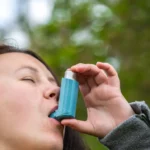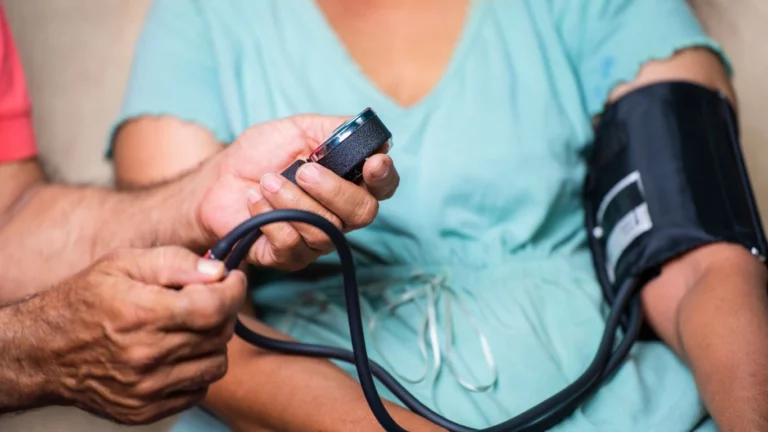Early Signs of Exercise-Induced Asthma: How to Recognize Them
If you’re into fitness or sports, you might’ve noticed that after some exercise, you’re wheezing a little or struggling to catch your breath. But here’s the thing—it might not just be a lack of fitness. Exercise-induced asthma (EIA), also known as exercise-induced bronchoconstriction (EIB), could be the culprit. It’s a condition where your airways tighten during or after physical activity, making breathing a challenge. If you’re wondering what the early signs of EIA are and how to spot them, let’s dive into it.
What Exactly is Exercise-Induced Asthma?
Before we get into the signs, let’s break it down a bit. Exercise-induced asthma happens when physical activity triggers your airways to constrict, leading to symptoms like wheezing, shortness of breath, and coughing. It’s a form of asthma that’s specific to exercise, but the good news is, it can often be managed with a bit of knowledge and the right approach.
Early Signs You Might Have Exercise-Induced Asthma
It can be tricky to identify at first because some of the symptoms overlap with other exercise-related issues. But, there are a few common signs you can watch out for.
1. Wheezing During or After Exercise
Wheezing is a high-pitched whistling sound that happens when you breathe out. If you notice it while you’re running, cycling, or doing any other type of exercise, it could be a sign of exercise-induced asthma. Wheezing is one of the most common early symptoms, especially after physical exertion.

2. Shortness of Breath
Are you gasping for air more than you should after a run or during a workout? If you find yourself winded quickly or feel like it takes a lot longer to recover from your usual routine, this might be a sign of exercise-induced asthma. The feeling of breathlessness can come on suddenly and may last for a while, especially after high-intensity activities.
3. Chest Tightness
Ever feel like there’s a weight on your chest after exercising? That tight, constricted feeling in your chest can be another red flag of exercise-induced asthma. It can make it hard to breathe deeply or feel like you’re not getting enough air.

4. Coughing After Exercise
If you’re coughing after working out, especially a few minutes after you’ve finished exercising, this could be another indicator. It might be dry coughing or even productive coughing, where you’re trying to clear mucus from your lungs. This coughing often happens as a result of the airways constricting.
5. Fatigue or Decreased Performance
Feeling exhausted much faster than usual or noticing that your exercise performance is suddenly dropping could be linked to EIA. If you typically have a good endurance but find that you’re consistently struggling, it’s worth checking out.
What Triggers Exercise-Induced Asthma?
Exercise-induced asthma can be triggered by a variety of things, and it varies from person to person. Here are a few common culprits:
- Cold air: Breathing in cold, dry air while exercising outdoors (especially in the winter) can cause airways to tighten.
- Allergens: Pollen, dust, and even pollution can be triggers for some people when exercising outside.
- High-intensity workouts: Vigorous exercise, especially activities like running or cycling, can cause the body to demand more oxygen, which can lead to constricted airways.
- Indoor environments: If you’re working out in places like gyms with poor air circulation, the air can be dry or full of irritants, contributing to symptoms.
How to Manage Exercise-Induced Asthma
Okay, so you think you might be dealing with exercise-induced asthma. First of all, don’t panic! There are plenty of ways to manage the condition and still enjoy your workouts. Here’s what you can do:
1. Use Your Inhaler Before Exercise
If your doctor has prescribed an inhaler, make sure to use it before you work out. It’s usually recommended to use a bronchodilator about 15 to 20 minutes before exercising. This helps keep your airways open and reduces the chance of symptoms occurring.
2. Warm-Up and Cool Down Properly
A proper warm-up and cool-down routine can make a big difference in preventing EIA symptoms. Starting slowly allows your body to adjust to the exercise, and cooling down properly can help your breathing return to normal gradually.
3. Choose the Right Exercise Environment
If cold air triggers your asthma, try to work out indoors during winter months. Similarly, if pollen or pollution is an issue, working out in a gym with good ventilation or choosing early morning workouts can help you avoid exposure.
4. Stay Hydrated
Hydration is key for everyone, but especially if you have asthma. Keeping your airways moist can help reduce the severity of symptoms, so make sure you drink enough water before, during, and after your workout.
5. Follow Your Doctor’s Advice
If you suspect you have exercise-induced asthma, it’s always a good idea to talk to your doctor. They might recommend a specific action plan, including medications or lifestyle changes, to help you manage the condition.

Conclusion
Exercise-induced asthma can definitely put a damper on your workout routine, but recognizing the early signs and managing it properly means you don’t have to stop exercising. By knowing what to look out for—like wheezing, coughing, or shortness of breath—and taking steps to manage your symptoms, you can keep working out safely and effectively.
Appendices
References
- American College of Allergy, Asthma, and Immunology (ACAAI). (2024). Exercise-Induced Asthma: Symptoms and Treatment. Read Article
- National Institutes of Health (NIH). (2023). Understanding Asthma and How It Affects Exercise. Read Article
- Mayo Clinic. (2024). Exercise-Induced Bronchoconstriction: Treatment and Management. Read Article
FAQs
- Can exercise-induced asthma go away on its own? Exercise-induced asthma doesn’t typically go away on its own, but it can be well-managed with the right treatment. Speaking to your doctor about a personalized management plan is important.
- How do I know if I have exercise-induced asthma or regular asthma? The key difference is that exercise-induced asthma only happens during or after physical activity, while regular asthma can cause symptoms at any time. A doctor can help you figure out which one it is.
- Can I still play sports if I have exercise-induced asthma? Yes, with the right management plan, you can still enjoy sports and exercise. Using an inhaler and adjusting your routine can help prevent symptoms.
- Is EIA more common in certain sports? It can happen in any sport, but it’s more common in sports that require prolonged or intense physical exertion, like running, swimming, or soccer.
- What can I do if I experience symptoms during exercise? If you feel symptoms during exercise, stop immediately, use your inhaler if prescribed, and wait until you can breathe easily again. It’s always good to have an action plan with you during workouts.
Disclaimer
The information provided in this article is for general informational purposes only and should not be considered medical advice. Always consult with a healthcare professional before starting or changing any treatment plan. If you have any concerns about exercise-induced asthma, a doctor can provide personalized guidance and care.














